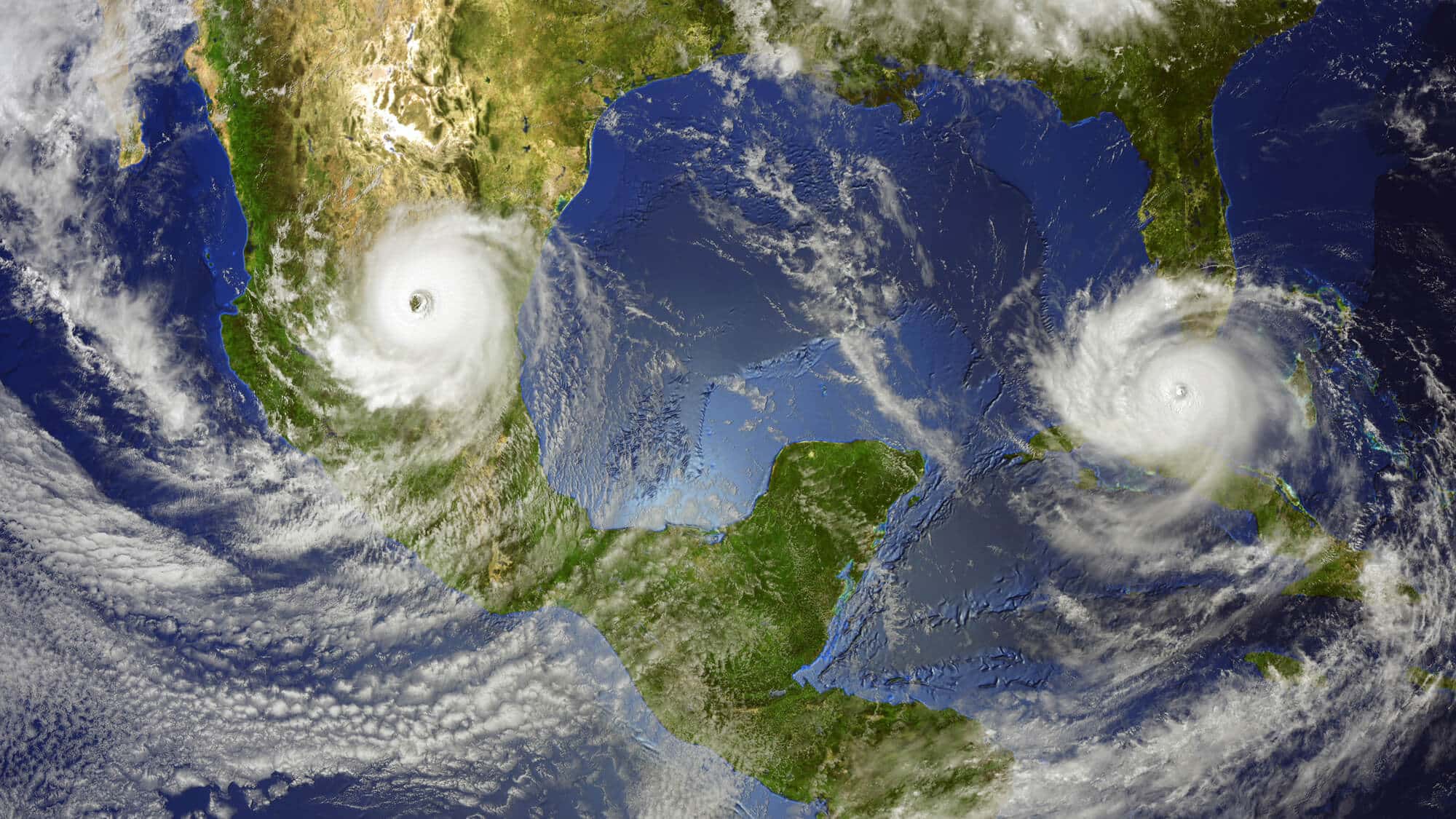The researchers: Both a protein a few nanometers in size and a hurricane hundreds of kilometers in size operate according to conservation laws, analogous to conservation of energy, which contribute to the emergence of order from completely chaotic dynamics. * The understanding of the flow of proteins in the membrane may help to plan drugs in a more efficient way

A new international study with the participation of researchers from Tel Aviv University found a surprising connection between the movement of proteins in biological membranes and the movement of hurricanes. According to the researchers, both in the system of the proteins and in the system of the hurricanes it is possible to show that there are conservation laws, analogous to conservation of energy, which limit the possible configurations and therefore contribute to the emergence of order from completely chaotic dynamics.
The research was conducted under the leadership of Dr. Naomi Oppenheimer from the Raymond and Berly Sackler School of Physics and Astronomy at Tel Aviv University together with Dr. Rickmoy Samantha from the Indian Statistical Institute and other researchers from the Flatiron Institute in New York. The research was recently published in the journals Physics of Fluids and Physical Review Letters.
The researchers explain that every cell in the body is wrapped in a membrane that separates it from the outside world. A membrane is not just a passive partition, it is essential for the proper functioning of the cell. On the surface of the membrane there are many proteins that are responsible for various actions in the cell. For example, a protein called ATP synthase is responsible for producing and storing energy. The proteins can move across the membrane because the membrane is not rigid, but a liquid sheet (just like a soap bubble). Some proteins (like ATP synthase) rotate and create small eddies around them.
Why do the proteins rotate?
As part of the current study, the researchers decided to check - is there a reason for the rotation of the proteins beyond creating energy and what is the flow that is created as a result of these eddies? To their surprise, it turned out that the rotation contributes to the creation of ordered structures and that the flow created by the rotation of these proteins is very similar to the dynamics of hurricanes and atmospheric flows on very different scales (a protein is a few nanometers in size and a hurricane is hundreds of kilometers in size).
"During the research we saw that proteins which are initially messy, very quickly formed ordered hexagonal crystals and this really surprised us because unlike molecular crystals, there is no attraction between the proteins and despite this, order was created at the end of the initial chaos", Dr. Naomi Oppenheimer explains. "These are doubly surprising conservation laws in the protein system, because the system is out of equilibrium and consumes energy."
To date, most of the research done on biological membranes has assumed that the membrane is flat. The current research focuses on the flow in spherical membranes and according to it there are significant consequences for the curvature on the resulting flow. For example, in a spherical membrane, apart from any protein that rotates and creates a vortex around it, other vortices are spontaneously formed in the liquid. That is, a vortex is created even when there is no protein to create it. The new eddies move in the flow and can collide with "anti-eddies" and disappear. In addition, if the cell is very small, even one protein rotating on the surface of the cell will cause total rotation of the entire cell.
The studies summarize the observations of the ordered crystalline structures that form ATP Synthase proteins in the membrane and are based on previous studies in the field that focused on the movement of one particle in a spherical membrane, but not on the rotation of the particle or other particles, as well as on research that showed for the first time that a crystal is a possible state of proteins .
"We are basing ourselves on previous studies and show theoretically and on the basis of simulations that above a certain concentration the proteins will always crystallize spontaneously and this crystal will be stable" - says Dr. Oppenheimer. "The research method is the modeling of the problem and its abstraction. We started by modeling the membrane and the proteins using equations. We solved the equations analytically or with the help of a computer and then wrote simulations that would model the movement of tens to thousands of such proteins in a flat or spherical membrane."
Understanding the flow in the membrane may help to design drugs more effectively. Also, the research findings are an important step in the understanding of active mixing in the membrane. The formation (and disappearance) of detected vortices increases the mixing in the membrane, which contributes to the acceleration of chemical reactions in the cell.
"We hope that our research will spur more researchers to make experimental observations in biological cells and look at the flows that occur on the surface of the cell. In the theoretical field, we plan to look at the movement of other types of proteins across the membrane as well as other cases where we see order created by the flow of microorganisms" - Dr. Oppenheimer concludes.
More of the topic in Hayadan:

2 תגובות
By the way, this is the same shape of galaxies and certain black laws
They say "might" for bad, for good they say "might".
No surprise at all. I was license illiterate when I discovered that a scientific newspaper and a partisan newspaper
fall off the table in the same direction when I put my hands on them.
Benzene Claim and Honey Forest This Dwagma I knew after my mother taught me to read.